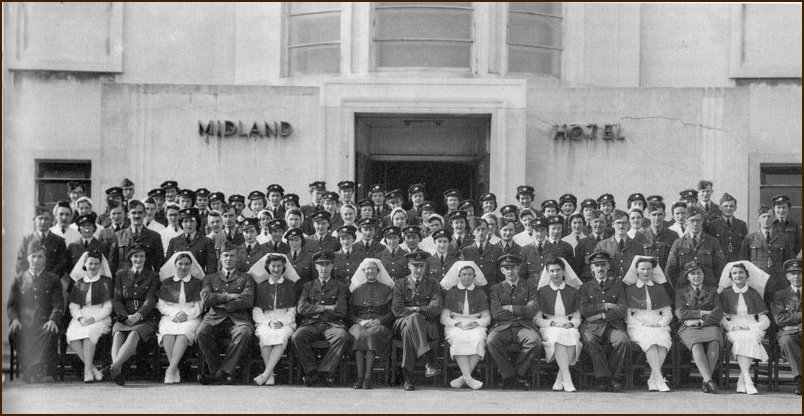Alternative Uses in WWII
Home Page / Art Deco Home / Derelict / Midland Home / Open Air Lidos / Ocean Hotel
Alternative Uses for iconic Art Deco buildings during WWII
Page Under Construction
Midland Hotel - requisitioned by the Royal Air Force to serve as a Hospital
"The Midland Hotel in the Centre of the Promenade was a hospital for all ranks and was used for all Service personnel, even for people coming to see specialists from outlying units of the R.A.F."
Ocean Hotel - requisitioned by the National Fire Service
Imperial War Museum
Saltdean Lido - requisitioned by the National Fire Service
After its May 1938 opening, Saltdean Lido enjoyed just three summer seasons before ‘The Battle of Britain’ forced the lido to close its doors. The building went on to play a vital role in the Second World War; in 1941, it was requisitioned by the National Fire Service – who also requisitioned the lido’s sister building, the Ocean Hotel. The lido was used as a water tank, and the grounds were used by instructors and fire officers for training exercises. It was during this period that the lido’s iconic neon-lit art deco sign was taken down and lost. Although the pool was closed to the general public at this time, an alternative role was found for its changing rooms. Sister McLaughlin, from Kemptown, Brighton, petitioned the council to have the Lido’s wings sanctified for religious use. Its male changing rooms were used for church services and the female changing rooms became a Sunday School. Source : Saltdean Lido.co.uk
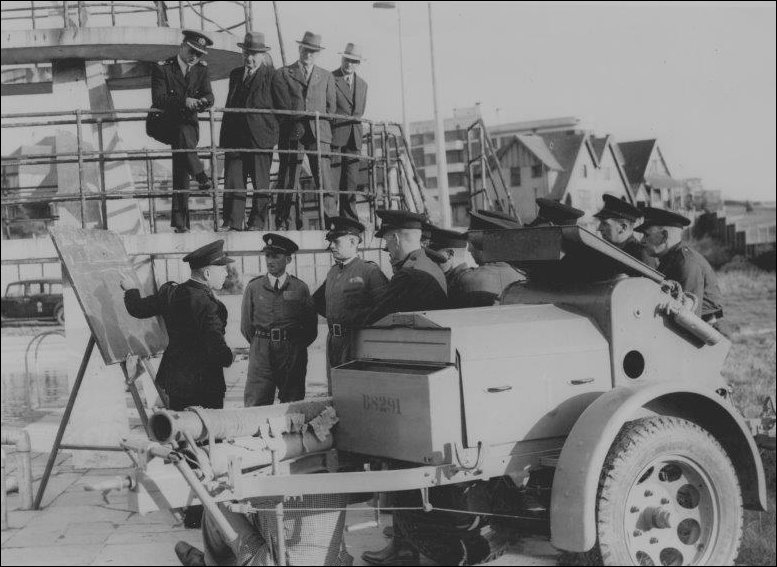
Saltdean Lido played its part during World War II. From October 1941, the National Fire Service used the main pool as a water storage tank and for training exercises. Here, fire officers are receiving instruction at the base of the lido's three
tiered diving boards. - Image and description courtesy & © of Saltdean Lido.co.uk
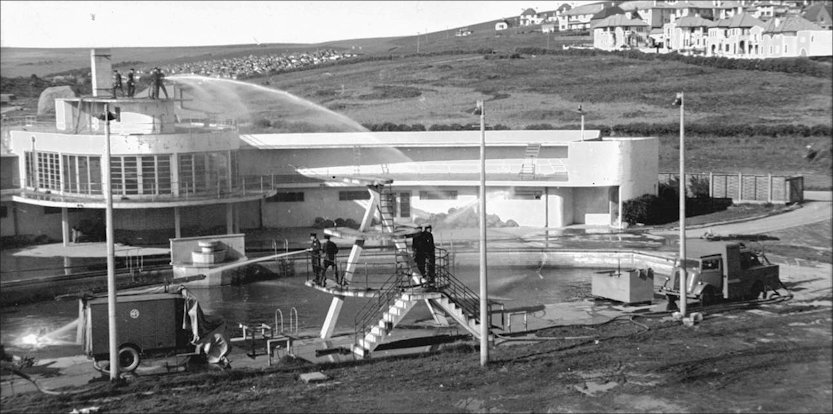
"Not many people know that Saltdean Lido played a unique role in the Second World War, when it was requisitioned by the National Fire Service as a training facility in 1941! The Fire officers, who attended classes at the Lido’s sister building - the Ocean Hotel, would go onto fight fires all over the U.K in the Blitz (note how the Lido’s famous sign was removed at this time so as as not to serve as a signpost for Hitler’s Luftwaffe)." - image and dialogue sourced from zonezine.co.uk
Littlewoods Pools Factory requisitioned for Governmental Censorship & manufacturing Aeroplane spares
Although I have found many quotes (and linked their sources) about Littlewood's war effort such as :
- "A year after it opened, during World War II, it was was requisitioned and became home of the government’s postal censorship department, while its printing presses were used to print National Registration cards. Its vast internal spaces were used for manufacturing the floors of Halifax Bombers, barrage balloons and woollen material. In the 1940s the building was also used by Unity Pools (formed from Littlewoods, Zetters and Vernons)." Source : Wikipedia
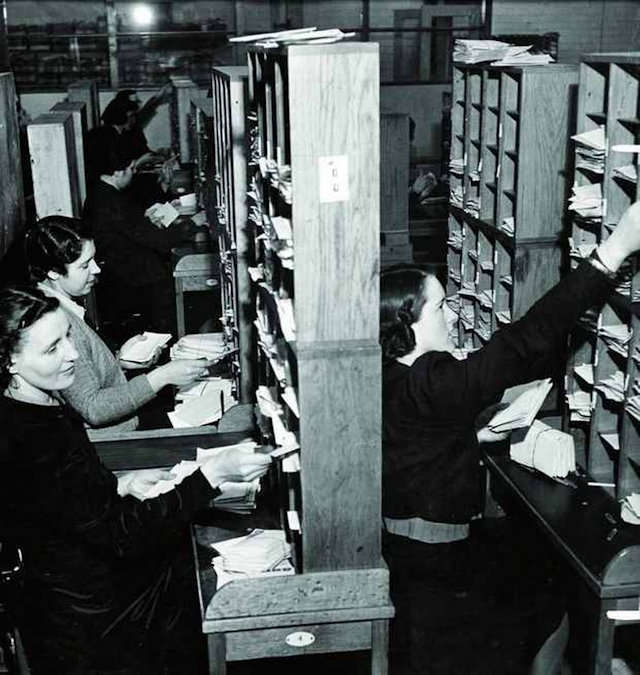
"Envelopes being alphabetically sorted at the Unity Football Pools headquarters in Liverpool, in 1940. Unity Pools operated throughout the Second World War. It was formed, at the Government's behest, from the three major pools companies: Littlewoods, Zetters and Vernons. Coupons were printed in national newspapers in order to save paper. 28th December 1939" - Narrative and image courtesy and © of the Liverpool Echo
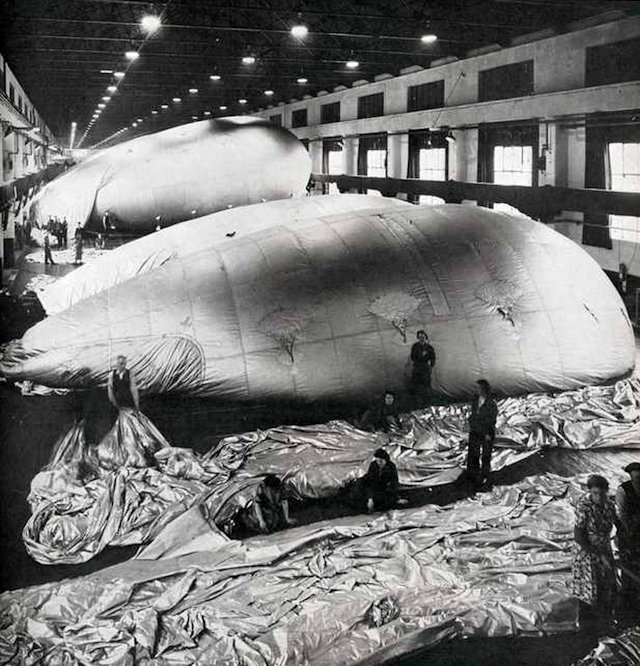
Barrage balloons for Echo feature on 'Littlewoods at War' - caption and image sourced from and © of the Liverpool Echo
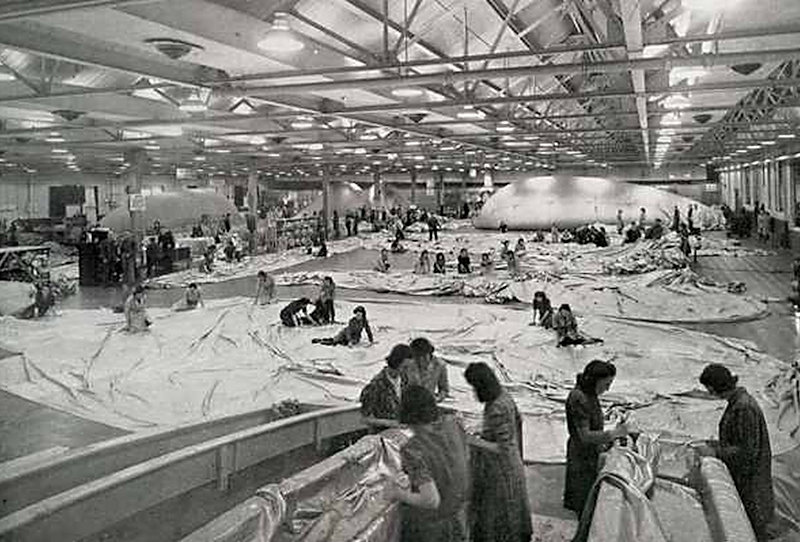
Wartime pic for Echo feature on 'Littlewoods at War' - caption and image sourced from and © of the Liverpool Echo
- "But it also played a vital role during World War Two, when parts of Halifax bombers were assembled there." Liverpool Echo 08.05.2013
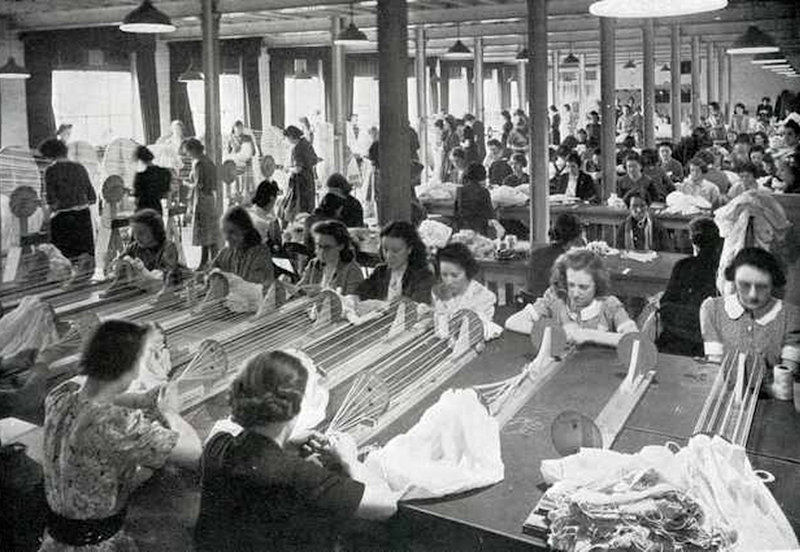
'Littlewoods at War' pic for echo (unidentified war work) - caption and image sourced from and © of the Liverpool Echo
- "The building has crammed a lot into its short history. As well as being the centre of the Littlewoods Pools business it also played a part in the Second World War. At the outbreak of the war the printing presses were used to print 17 million National Registration forms in just three days. The floors of Halifax Bombers were assembled at the building later in the war and it was also the nerve centre of MC5, the government agency that intercepted mail to break enemy codes." BBC
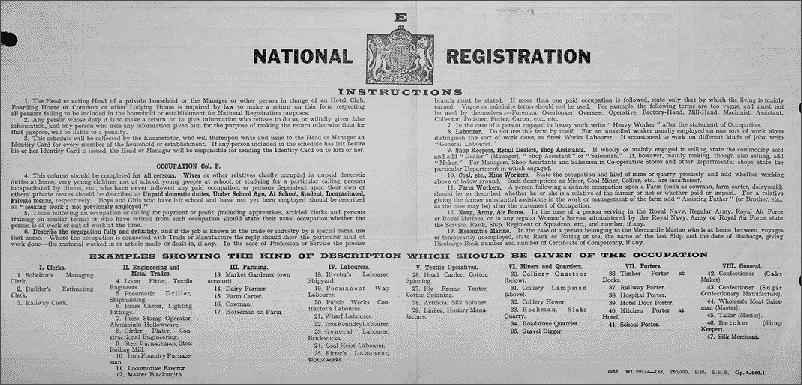
This is an example of one of many variations of the National Registration Forms and is likely to have been one of those printed at Littlewoods - for other examples visit Find My Past Original 1939 Registration Forms
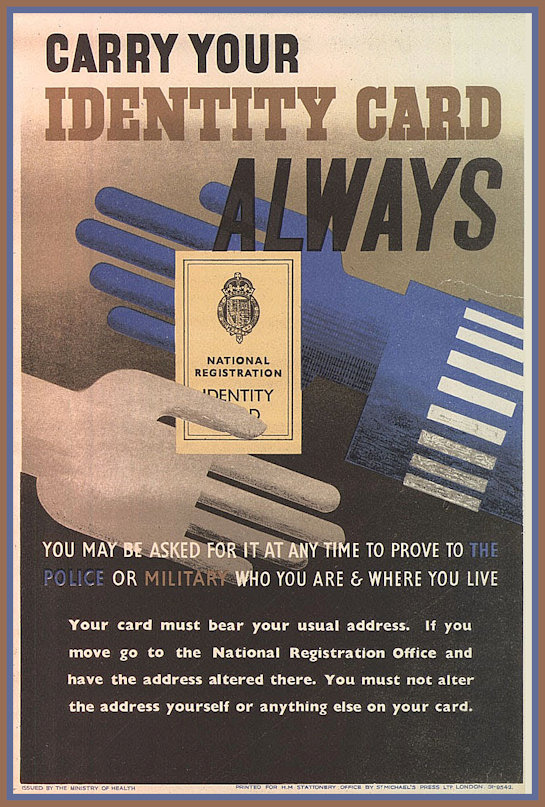
An exhortation to always carry your ID Card with you - 'Printed for H.M. Stationery Office by St. Michael's Press Ltd. London
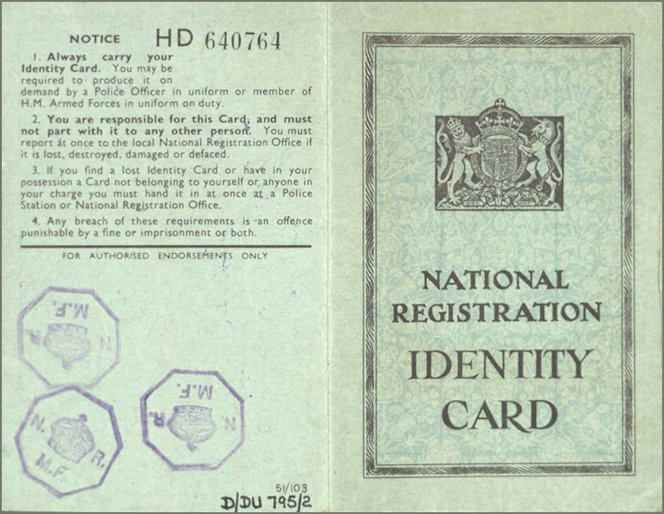
Presumably after filling the form printed at Littlewoods this would be the final product - loving the eau-de-nil hues
It is this remarkable entry (reproduced partially below) on the Subterranea Britannica (author Chris Rayner) that really fills in the blanks:
"Where there was space on a factory building site, an external shelter was likely to be the favoured solution, reducing the likelihood of the staff air raid shelter being crushed by the building above collapsing on it or the escape route being blocked by post-impact debris. At the Littlewoods site in Edge Hill, the shelter was built at the eastern edge of Wavertree Park and was aligned parallel to the factory building to allow rapid filling via several gateways. The factory itself is an attractive 1938 art deco building, which surprisingly for its date was not built with an integral heavily protected basement shelter. Littlewoods was one of the most famous shopping catalogue companies formed in 1928, though like many factories its production was turned over the military ends during the Second World War. It was then used for various activities in support of the war effort, including printing National Registration forms (on the outbreak of war 17 million were printed here over 3 days), assembling the floors of Halifax bombers, and by the code breakers of MC5, the government office that intercepted mail to and from suspected enemy agents.
Merseyside was the second most heavily bombed part of Britain after London, and its air raid shelters would have seen a great deal of use during alerts and raids. The Littlewoods shelter is approximately 300m long, aligned on a northerly axis parallel to the Littlewoods building. In plan it resembles a chain of rectangles (with pairs of shelter chambers roughly 12m and 9m long along the four sides) joined by 9m long corridor galleries. It had 13 entrances evenly disposed along its length to facilitate filling from the west side of the factory – these sloping entrance passages joined the connecting corridor galleries at right angles giving excellent blast protection.
The shelter was semi-buried using a cut and fill method with earth banked on top of it for bomb splinter protection, and may have begun as a Munich crisis trench rapidly dug during a few tense weeks in September 1938. Many of these were then lined with precast concrete wall and roof panels which were slotted together to give a degree of dryness and an illusion of permanence. Littlewoods’s shelter though is built with much stronger reinforced concrete and the clean timber board marks indicate higher quality and more expensive construction than normal. The shelter appears on a 1940 map
Its great treasure though is the remarkable series of portraits of men and women at the south end. Several wear helmets and their quality suggests that they may have been painted from life, perhaps to entertain the occupants during the tedious wait for the All Clear. There are men and women, and one portrait even appears to cleverly work round a pre-existing stain on the concrete surface. These appear to be the work of one artist, maybe even one of the MC5 experts since graphic skills were used by MC5 to adjust and add false information to letters before sending them on. It is likely that they are sketches of co-workers at the factory, and some individuals are identified by their initials. Most are of women, while the men shown are either in uniform or middle aged, one appearing with a bow tie and one with a pipe.
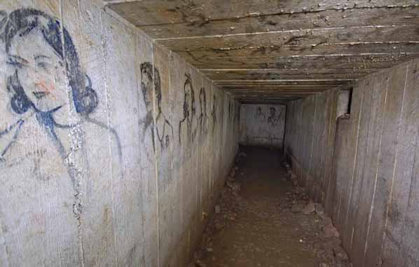
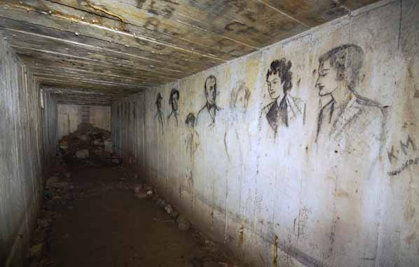
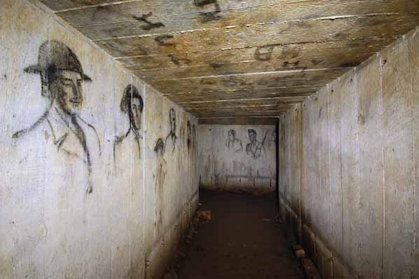
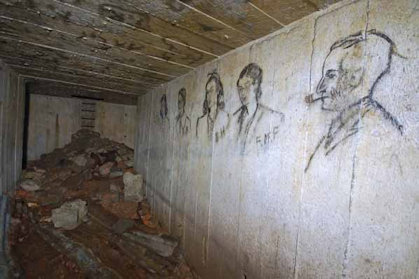
Elsewhere cigarette lighter writing on the ceiling indicates the dates 1942 and 1943, after the main blitz and before V1 attacks, in the era of occasional one-off raids. Otherwise signage is limited to black stencilled bay numbers and “Turn Right and Duck” signs."
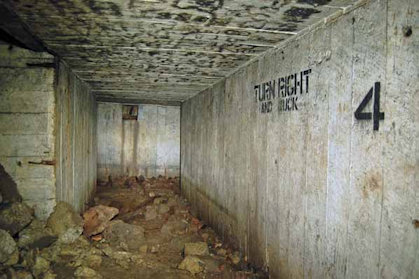
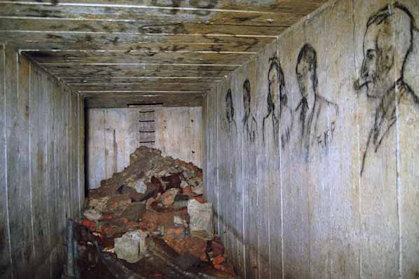
Images of the treasured portraiture courtesy and © of Chris Rayner via the Subterranea Britannica website and achieved by kind permission of Liverpool City Council and the ' Friends of Williamson's Tunnels' who opened up and then resealed the Shelter.
Page updated : 14th May 2020 (G)
